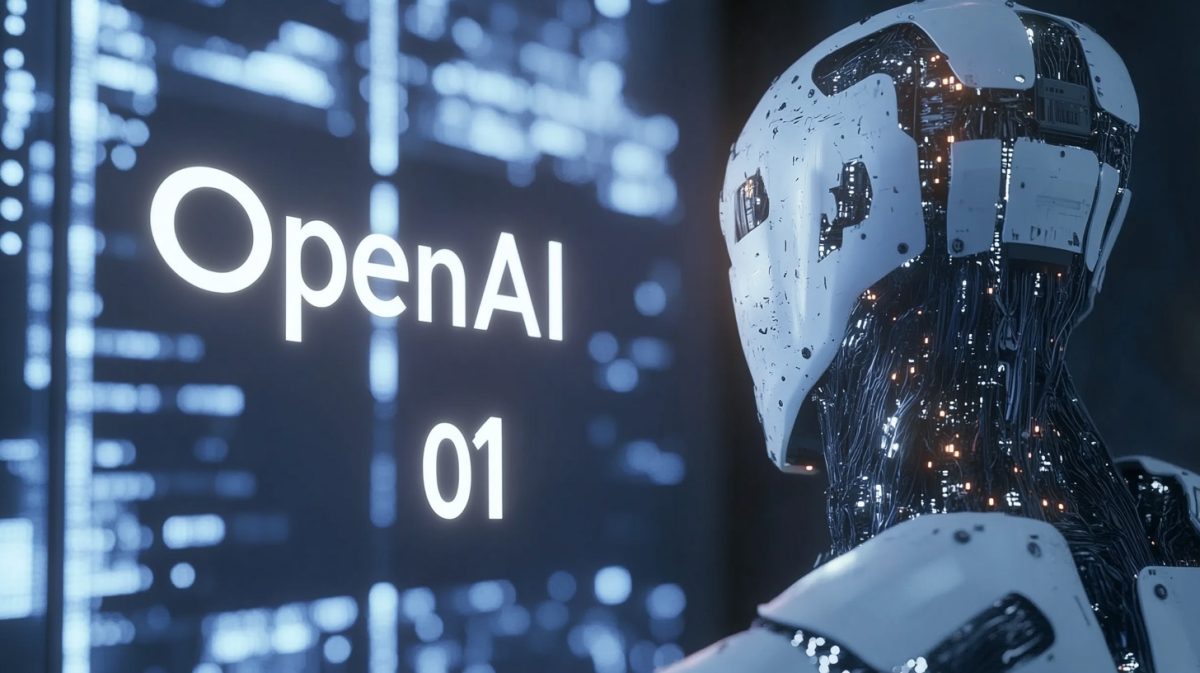Artificial Intelligence Giant Pushes Boundaries with Enhanced Problem-Solving Models
In a significant leap forward for artificial intelligence, OpenAI has introduced the first models in its groundbreaking ‘o1’ series. These models are engineered to elevate AI’s reasoning prowess, enabling them to tackle complex problems with unprecedented efficiency.

A New Paradigm in AI Reasoning
The o1 series represents a paradigm shift in AI development, prioritizing a more deliberate, thoughtful approach to problem-solving. These models, akin to human cognition, are trained to ‘think’ before responding, simulating the process of refining thought, exploring diverse strategies, and learning from errors.
Unmatched Performance in Complex Domains
OpenAI’s rigorous testing has revealed o1’s remarkable capabilities. The upcoming model update, currently in development, demonstrates performance on par with PhD students in challenging benchmark tasks across physics, chemistry, and biology. Additionally, o1 exhibits exceptional prowess in mathematics and coding. In a qualifying exam for the International Mathematics Olympiad (IMO), the existing GPT-4o model achieved a 13% success rate, whereas the o1 model scored an impressive 83%. Further, o1’s coding abilities were evaluated in competitive coding contests, where it reached the 89th percentile.
Early Preview with Promising Potential
While o1-preview is an early iteration, it lacks some of the features that make Chat user-friendly, such as web browsing, file uploads, and image processing. For many common tasks, GPT-4o remains the more capable option in the short term.
Nevertheless, o1 signifies a significant advancement in AI’s ability to handle complex reasoning tasks, heralding a new level of AI capability. This breakthrough has prompted OpenAI to reset its model counter, designating this series as ‘OpenAI o1’.
Safety as a Paramount Concern
OpenAI has implemented a novel safety training approach that leverages o1’s reasoning capabilities to ensure adherence to safety and alignment guidelines. By enabling o1 to reason about safety rules contextually, it can apply them more effectively.
OpenAI measures safety through various methods, including testing how well models resist attempts to bypass safety rules, known as ‘jailbreaking’. In one of the most challenging jailbreaking tests, GPT-4o scored 22 (on a scale of 0-100), while the o1-preview model scored a significantly higher 84.
Reinforced Safety Measures
To complement the enhanced capabilities of these models, OpenAI has fortified its safety protocols, internal governance, and collaboration with federal governments. These measures include rigorous testing and evaluations using their Preparedness Framework, best-in-class red teaming, and board-level review processes, including oversight by their Safety & Security Committee.
Collaboration for AI Safety
OpenAI has formalized agreements with the U.S. and U.K. AI Safety Institutes, granting them early access to a research version of the o1 model. This collaborative effort aims to establish a robust process for research, evaluation, and testing of future models, both before and after their public release.
Applications Across Diverse Fields
o1’s enhanced reasoning capabilities hold immense potential for tackling complex problems across various domains, including science, coding, mathematics, and related fields. Healthcare researchers can leverage o1 to annotate cell sequencing data, physicists can generate intricate mathematical formulas for quantum optics, and developers across all fields can construct and execute multi-step workflows.
OpenAI o1-mini: A Cost-Effective Alternative
The o1 series excels in accurately generating and debugging complex code. To cater to developers seeking a more efficient solution, OpenAI has also released o1-mini, a faster and more affordable reasoning model that is particularly adept at coding tasks. At 80% lower cost than o1-preview, o1-mini offers a compelling option for applications requiring reasoning capabilities without the need for extensive world knowledge.
Access and Availability
Chat Plus and Team users can access o1 models in Chat starting today. Both o1-preview and o1-mini can be selected manually in the model picker. Initially, weekly rate limits will be 30 messages for o1-preview and 50 for o1-mini. OpenAI is actively working to increase these limits and enable Chat to automatically select the appropriate model for a given prompt.
Chat Enterprise and Edu users will gain access to both models next week. Developers who qualify for API usage tier 5 can commence prototyping with both models in the API today, subject to a rate limit of 20 RPM. OpenAI plans to increase these limits after additional testing.
OpenAI also intends to extend o1-mini access to all Chat Free users.
Future Developments
This release marks an early preview of the o1 reasoning models in Chat and the API. OpenAI plans to introduce browsing, file and image uploading, and other features to enhance their utility for all users. Furthermore, they are committed to ongoing development and release of models in both the GPT and OpenAI o1 series.
Conclusion
OpenAI’s introduction of the o1 series signifies a remarkable milestone in the evolution of artificial intelligence. By focusing on enhanced reasoning capabilities and prioritizing safety, OpenAI is paving the way for a future where AI can tackle increasingly complex challenges and contribute meaningfully to diverse fields of human endeavor.